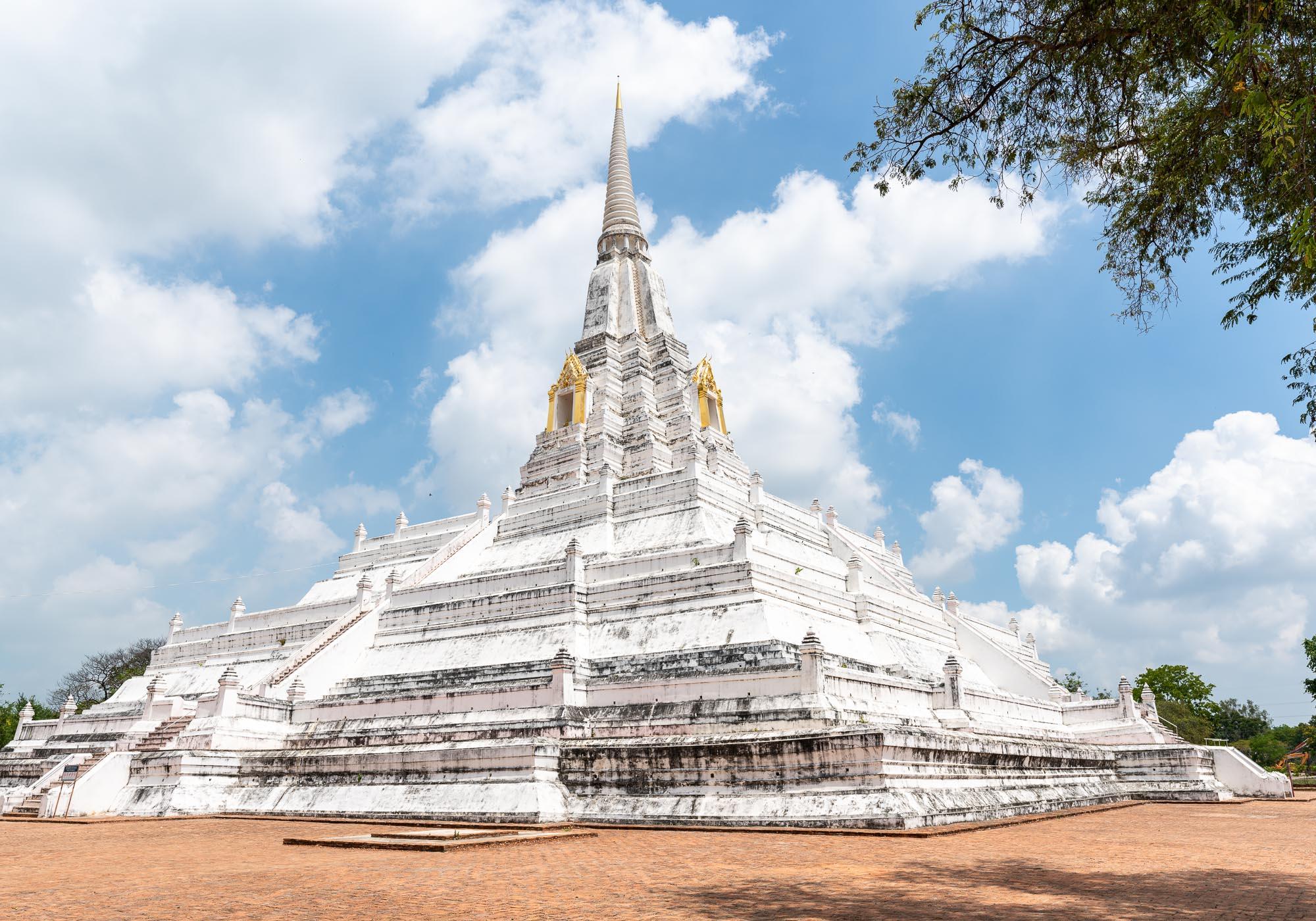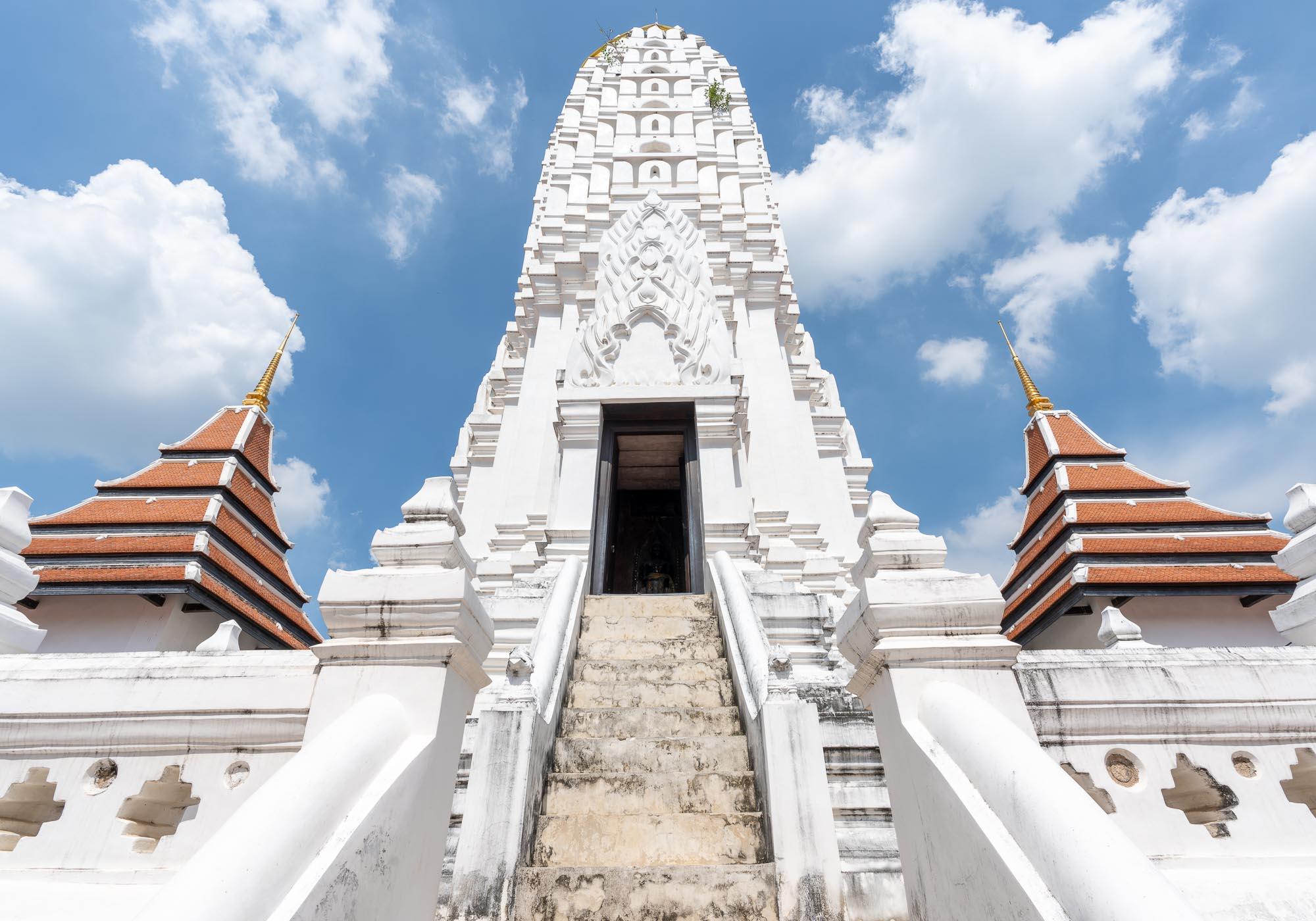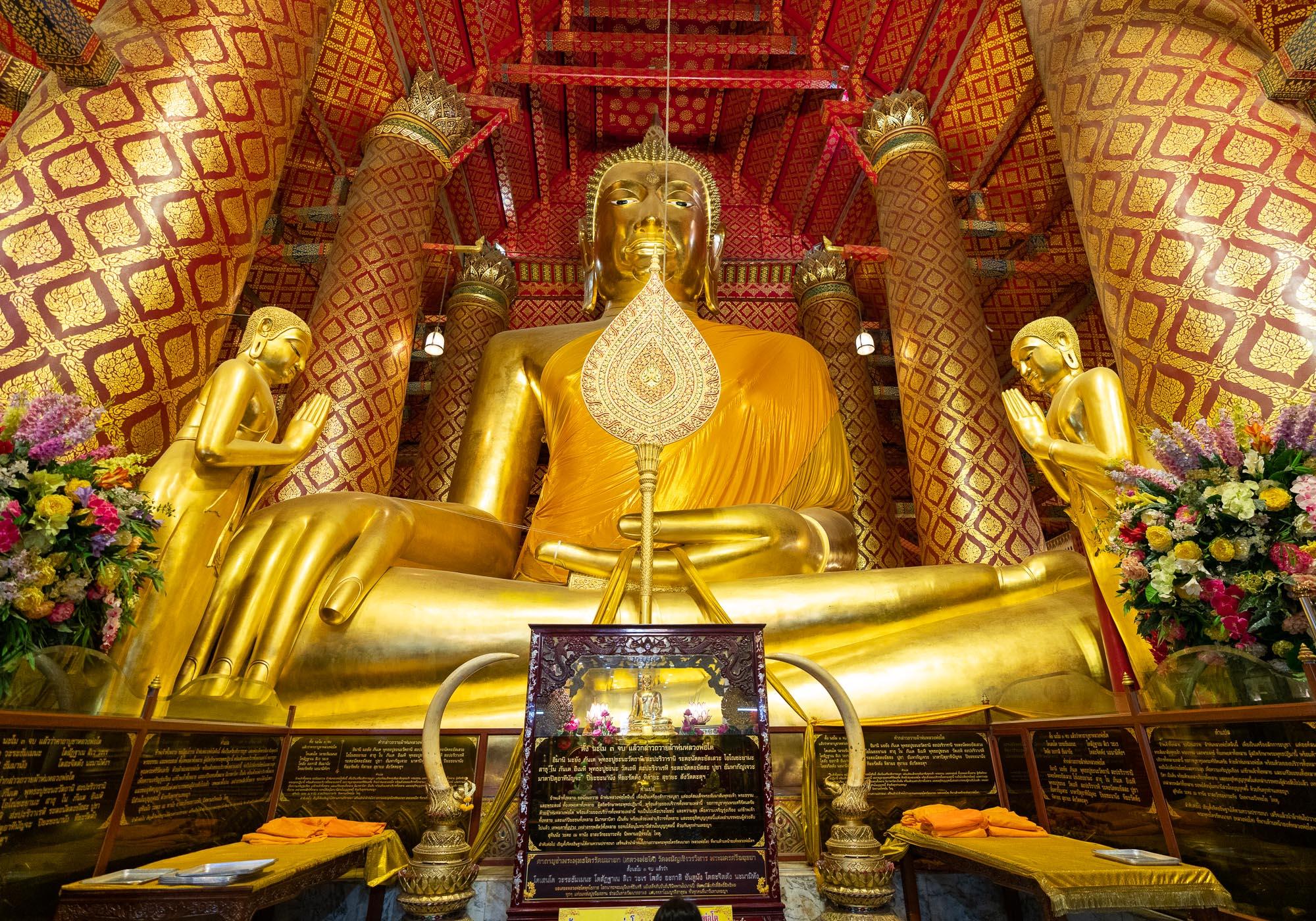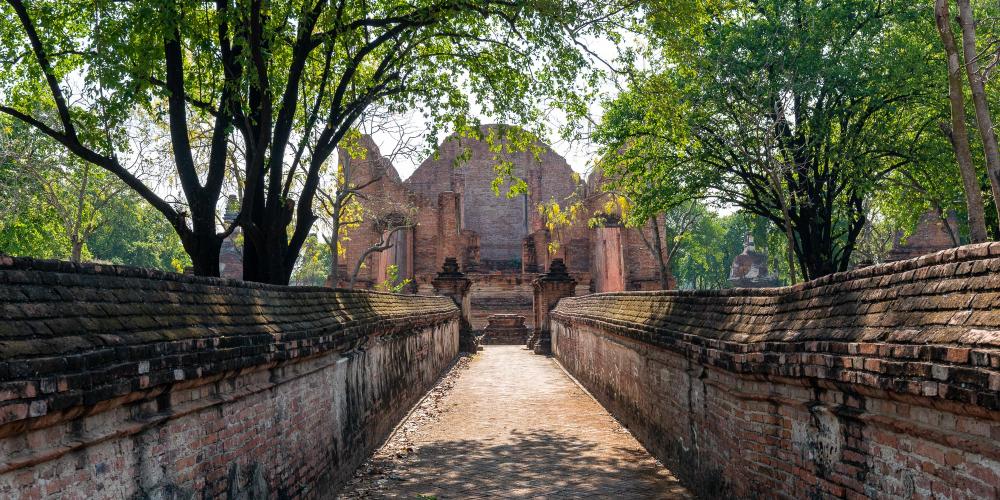Other temples

Although the largest and best-known temples in the centre of Ayutthaya attract most of the attention from visitors, there are dozens of other temples within the historical park and region around the main island. The different architectural styles and focuses of these temples demonstrate the variety of the Buddhist faith in Ayutthaya and its evolution over the centuries.
To appreciate the history of Ayutthaya, these are some of the most interesting temples to visit.
Wat Na Phra Men
As a functioning temple still today, Wat Na Phra Men offers an insight into the design and decoration of many of the historic temples from the early Ayutthaya Period.

King Ramathibodee II ordered the temple be built in 1499 and it became the site of several important events. It was here that the kings of Thailand and Burma met in 1569 for peace talks, and, in 1760, where the King of Burma set up cannons to fire upon the Royal Palace.
Wat Phu Khao Thong
The soaring stupa of Wat Phu Khao Thong, with its wide square base and pointed tip, is the highest temple structure in Ayutthaya, at 50 metres tall. It's painted white and has staircases that lead visitors to a large panoramic platform.

Although the temple was founded in 1387, the stupa was built in 1569 by the Burmese king to celebrate a victory over Ayutthaya. Two decades later, when Ayutthaya was liberated, the stupa was enlarged as a celebration.
Wat Phutthaisawan
One of the oldest temples in the city, Wat Phutthaisawan was built as a royal monastery by the founder of the Ayutthaya Kingdom, King Uthong, in 1353. The main prang shows influence from the Khmer style and represents Mount Meru from Buddhist cosmology.

Within the temple complex is a building with large 17th-century murals on the internal walls showing the story of a pilgrimage to the footprint of Buddha in Sri Lanka.
Wat Phanan Choeng
The first iteration of Wat Phanan Choeng was built in 1324, almost three decades before the city of Ayutthaya was officially founded. Over the centuries, it was renovated and expanded, including a large modern restoration by King Rama IV in 1854, which led to it becoming one of the city's most visited temples for worship.

The highlight of the temple is the gilded Buddha statue that's 19 metres high and dominates the vihan building. During the height of the Ayutthaya Kingdom, this part of the city was the main Chinese settlement and the temple still has a large number of Chinese elements in its design.
Wat Maheyong
On the outskirts of the city, Wat Maheyong can be found in an ancient area called Ayodhya, which was inhabited before the founding of Ayutthaya. The temple was built in 1438 by King Samphraya and is an example of a different style of temple built away from the centre of the capital.

Along with the large ordination hall, a highlight of the temple is the bell shaped stupa which would have had 20 Buddha images and 20 elephant images on each of its four sides. The style was influenced from Sri Lanka but is also similar to the design of some temples around Sukhothai.



